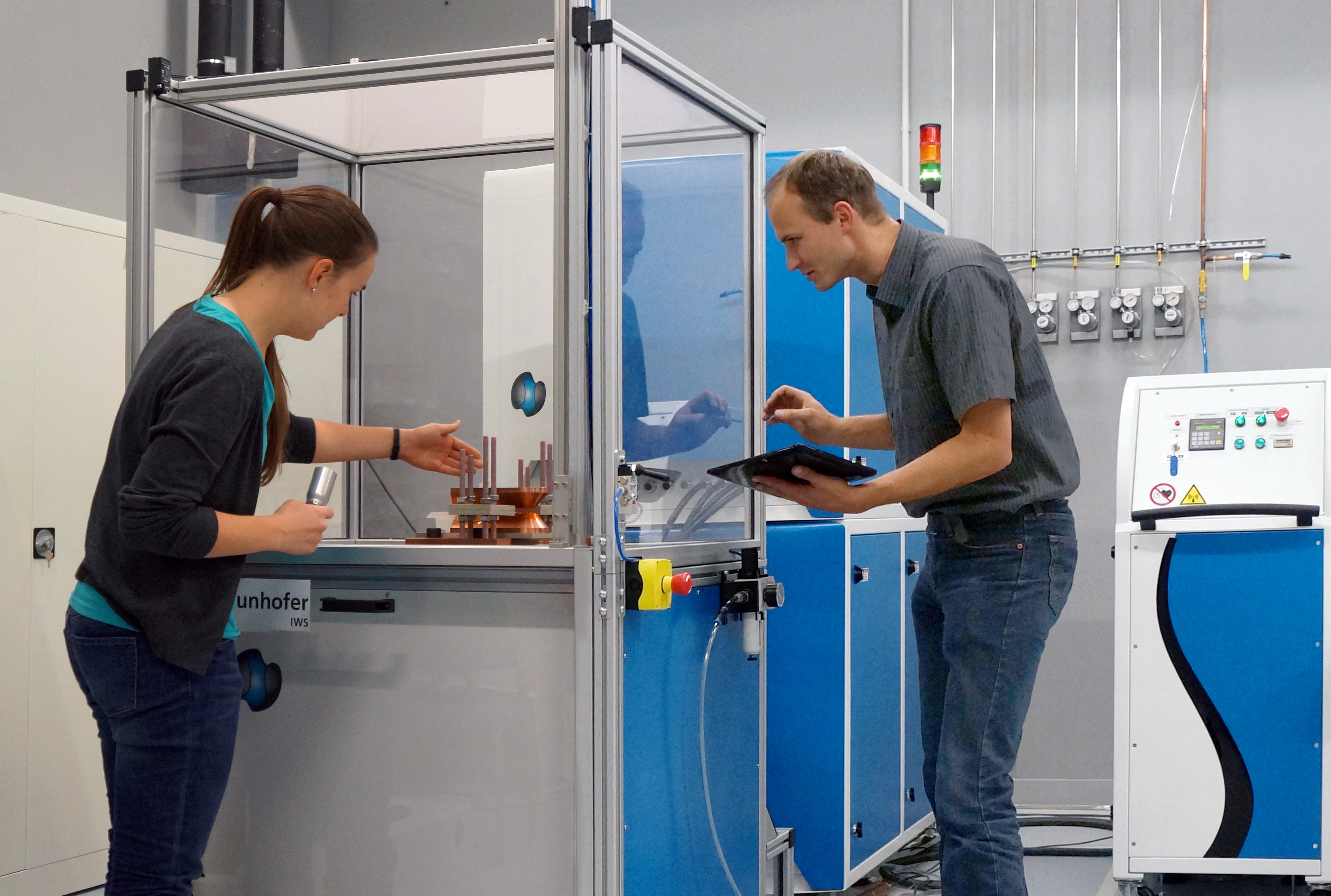Joining with magnetic fields
The magnetic pulse welding process, a procedure which has been relatively un-known so far, joints two metal parts without melting. How does that work? The special trick is the high velocity with which the two parts collide during the joining process. The parts lose their passive surface layers and melt together. The necessary forces are applied via a magnetic field flash, meaning there is no contact. The magnetic field is generated by a robust coil, over which a capacitor is quickly discharged. The implementation of this, at first glance bafflingly simple, technology into industrial applications is the focus of the current research of the Fraunhofer-Institut für Werkstoff- und Strahltechnik IWS Dresden.
The special feature of this procedure is the fact that completely different metals can be joined. Mixed material combinations, which could so far not be joined, or which were hard to weld, e.g. aluminum/copper or aluminum/steel, can now be perfectly welded. This process is highly suitable for e.g. tubular joints, since other joining processes, e.g. explosive welding, have hitherto failed. The welding process is performed without heat, gas or additive materials.
The scientists of the Fraunhofer IWS are advancing their research work to transfer this process development into industrial practice as fast as possible. Thanks to a specialized system, optimized to the corresponding demands and manufactured by Toulouse-based French BMAX, IWS scientists can now perform their task even better. The company BMAX is an internationally leading manufacturer of compact systems for the generation of high currents, needed for the procedure. “The close cooperation with the experts in Toulouse and our new system in Dresden is an ideal complement to our research“, says Dr. Gunther Göbel, group manager for tailored joining technologies at the IWS. “Now we have direct access to the hardware, which we can also implement in-series for the customer.“
Dresden research organizations have already made a name for themselves in the magnetic pulse scene. Several magnetic pulse proto systems have already been successfully developed in cooperation with scientists of the Helmholtz-Zentrum Dresden-Rossendorf. This experience helped to enlarge the necessary specialist expertise, and, in consequence, arouse our customers’ high interest into our technology. “Of course, so far, the magnetic pulse welding process has not been the subject of intensive research compared to other joining procedures, however, the new possibilities are very diverse, and must first be understood and spread”, G. Göbel emphasized. Here the IWS scientists can benefit from their extensive experience in many kinds of joining technologies and their comprehensive materials know-how. The IWS is an acknowledged expert in the field of joining technologies, e.g. laser beam welding, friction-stir welding, soldering and adhesive bonding.
According to the Fraunhofer idea, it is the goal of utmost priority to introduce this diversity to industry. “With our network “Tailored Joining“ we could address many of Dresden’s joining experts”, says Prof. Eckhard Beyer, executive director of the Fraunhofer IWS. "Together with researchers of the Technische Universität Dresden we will organize an international symposium focusing on joining technologies.” The aim of the symposium is to offer an overview about numerous developments in joining technology and to identify emerging trends. Interested participants from industry and science are to gain a broad understanding in present and future developments. In this discussion magnetic pulse welding will be highly present and address many interested parties.
 Fraunhofer Institute for Material and Beam Technology IWS
Fraunhofer Institute for Material and Beam Technology IWS